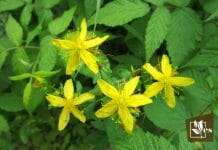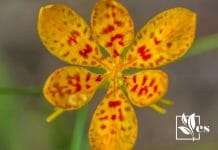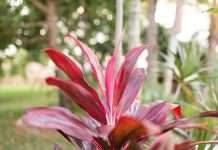Plants starting with X are common; however, we don’t pay much attention to their names, especially if they are mentioned together with other plants.

Every gardener is always looking for plants that add life and beauty to their garden, and these are no exception. We have a list of flowers, trees, and shrubs beginning with x, and you can choose some that you can grow in your garden.
JUMP TO TOPIC
- List of Plants Starting With X
- 1. Xanthosoma Atrovirens
- 2. Xanthorrhoea Latifolia (Grass Tree)
- 3. Xanthorrhoea Johnsonii
- 4. Xanthisma Texanum
- 5. Xanthium Strumarium
- 6. Xanthoceras Sorbifolium
- 7. Xanthorhiza Simplicissima
- 8. Xanthosoma Sagittifolium
- 9. Xeranthemum annuum (Everlasting Plant)
- 10. Xerochrysum Bracteatum
- 11. Xeronema Callistemon
- 12. Xerophyllum Tenax
- 13. Xchirtalpa Tashkentensis
- 14. Xylosma Congestum
List of Plants Starting With X
1. Xanthosoma Atrovirens
This plant originates from Tropical America. It is known as Mickey Mouse Taro or mouse cup taro because of the shape of the leaves that look like a Disney character.
– Features
The tip of the leaf forms a pocket with a tail and holds water like a cup. The leaves have an irregular color pattern starting with yellow with light gray-green and maturing to a deep green.
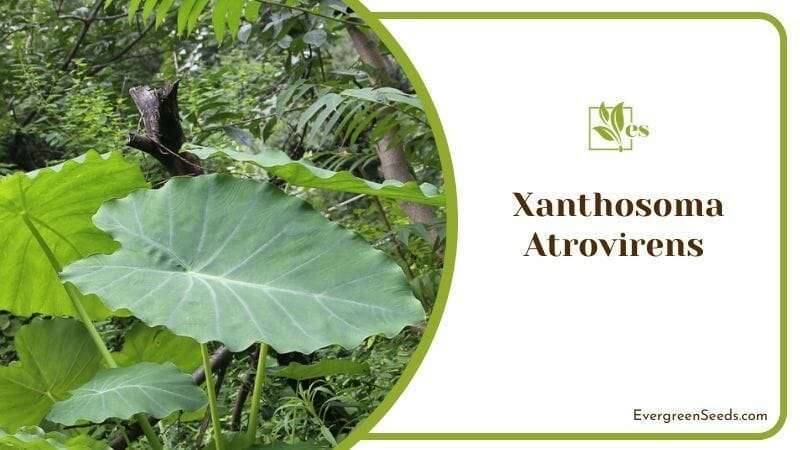
– Growing, Care and Maintenance
Antrovirens grow in USDA hardiness eight through ten. It thrives in bright, shady places with rich, moist soils. When growing it indoors, place it on a windowsill where it gets enough light throughout the day. It grows to about five feet tall with large variegated leaves.
Bring it indoors if growing in a container before the frost during the cold season. If growing outdoors, cut it back and leave it dormant until spring, when new growth occurs. Water this plant is sparingly as it can withstand low levels of water.
2. Xanthorrhoea Latifolia (Grass Tree)
This X plant is native to Australia and can survive in harsh dry climates. It is a shrub-like perennial grass tree with no trunk. It grows to about six inches high, spreading its mature leaves all over the place.
– Characteristics
When the leaves are young, they are more vertical, but when they mature. They spread out, surrounding the base of the plant with flattened, glossy old leaves. The leaves are bright green and narrow. The flowers have six petals in two rows, blooming from March to October.
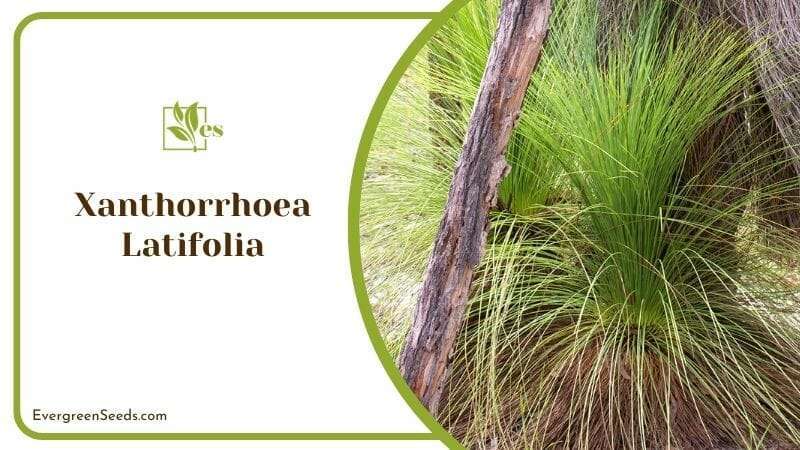
The outer petals are more papery, while the inner petals are membranous. You will find many insects and birds on this plant, as it is known to attract them.
– Growing Requirement
Grass tree thrives in sandy soil and gravel with minimal care. Watering should be done less frequently as it tolerates dry conditions.
3. Xanthorrhoea Johnsonii
Johnsonii or Johnson’s grass tree is native to Western Australia.
– Specifications
This plant would grow about 16 feet high, it is one of the shrubs that begin with X. It is a single-trunked plant that grows naturally in most areas. Its flowers are white and have borne a con-like spike above the leaves. The trunk of this plant arches as it grows older. You can use this plant to decorate fences.
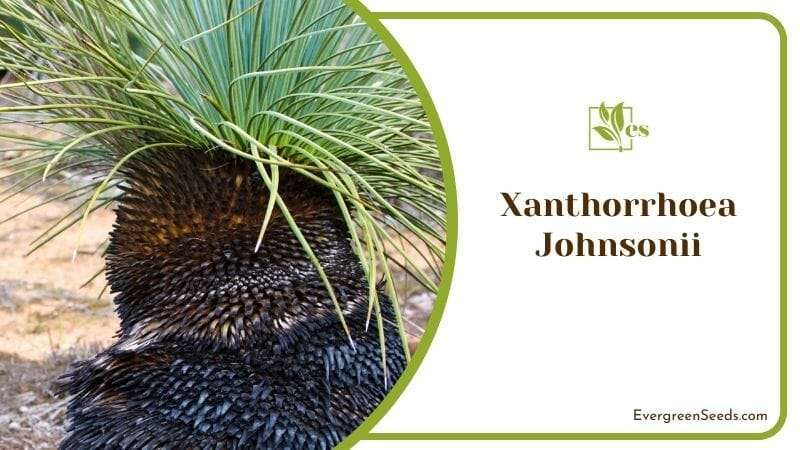
– Growing Requirements
Johnsonii is propagated using black seeds, as they would bloom from autumn to summer. It grows in loam, sand, or gravel in well-drained soils. It is a slow-growing perennial shrub with thick black trunks and a dense grassy clump of leaves.
It takes many years to reach maturity and can live up to 600 years. You can easily grow it in full light or under full sun and provide frequent watering.
4. Xanthisma Texanum
Texas sleepy daisy is an annual herbaceous native to Texas, Oklahoma, and New Mexico. It is an ornamental plant commonly grown across America.
– Specifications
This plant has lemon-yellow blooms in the spring, summer, and even in autumn. The flowers do not open until noon, hence the name-sleepy daisy.
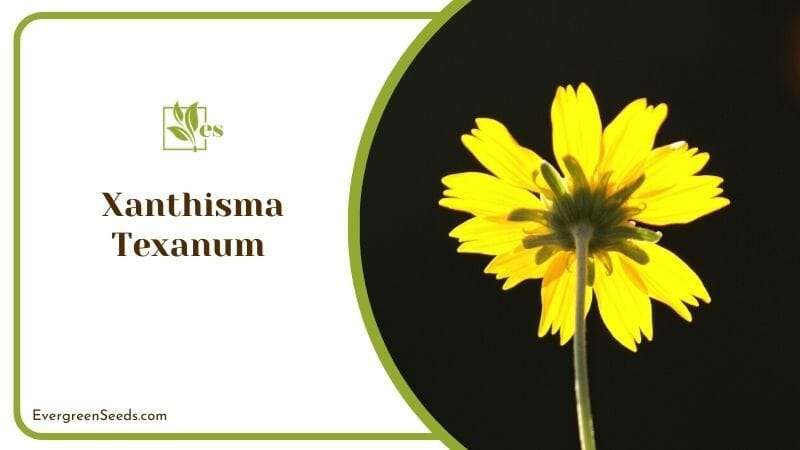
On the other hand, the flower heads are one and a half inches across, growing at the tip of the stem. The leaves are one to two inches long and deeply lobed or toothed to the plant.
– Growing Requirements
This plant is propagated by seeds and grows at least 10 to 30 inches tall. It will require adequate watering, allowing the soil to dry between the schedule.
5. Xanthium Strumarium
The Xanthium Strumarium is an annual weed in the daisy family, it is called cocklebur. It is native to North America, but is growing across the world today.
– Features
It is a much-branched plant, growing to about six inches high. Furthermore, it has stout stems that are green, brown, or reddish-brown. The leaves are dull-green on the upper surface and pale at the bottom. It has short, bristly hairs on the top and bottom surfaces. These leaves are broad, growing on long stalks.
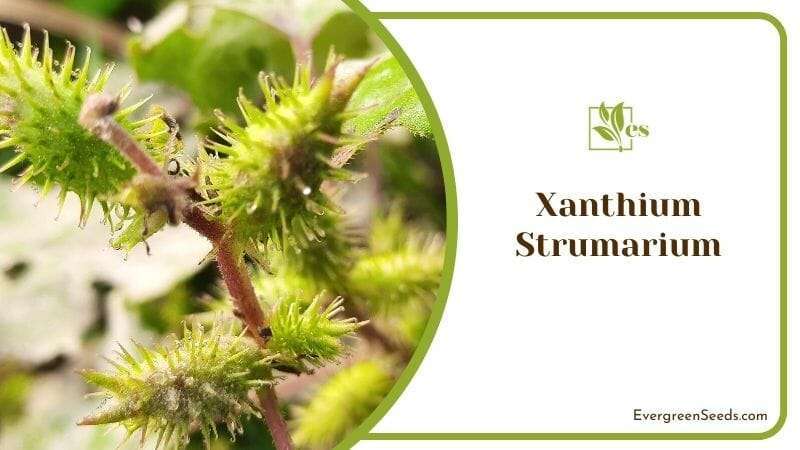
The Cocklebur flowers with yellowish-green blooms that go on to fruit. The fruit is called bur they are oval-shaped, colored green, yellow, and brown. This plant is considered invasive in most parts of East Africa
– Growing Requirements
Cocklebur thrives in cold-temperate areas, but is also found in Mediterranean and subtropical climates. It grows up to two feet tall in moist or wet sandy and loam soils, which is why you must keep it humid. It grows very well when it is under full sun to partial shade, however, note that it cannot survive in full shade.
6. Xanthoceras Sorbifolium
The yellowhorn plant is a small deciduous shrub native to Northern China.
– Flower Features
It flowers in the spring, producing white flowers with white edges and yellow throats, which later turn into deep maroon color once it matures.
– Growing Requirements
Yellowhorn grows in various soil types, but it prefers loam soils. It prefers warm, sunny, and dry areas. It does best in areas that experience dry springs and warm summers.
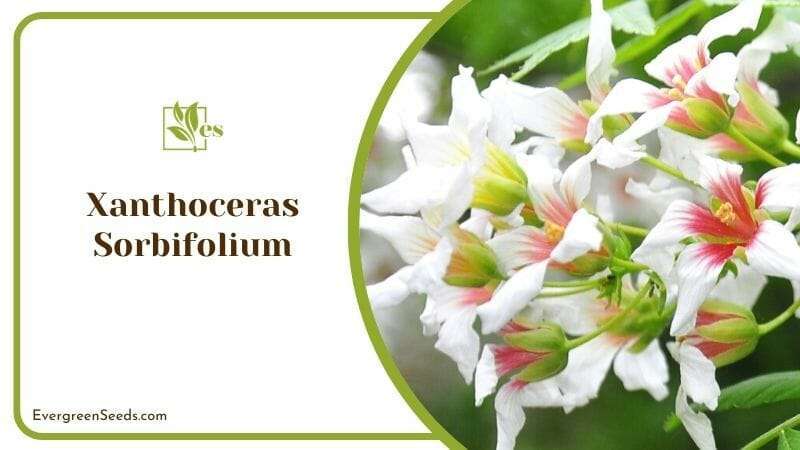
You can prune your plant after the spring bloom for better growth. Flowering requires summer heat to help ripen the wood and stimulate the flower buds.
Remember that you will need to protect it from frost and cold winds as it damages the growth of this young plant, and may even severely harm it.
7. Xanthorhiza Simplicissima
Xanthorhiza Simplicissima is also called yellowroot, and is a deciduous shrub native to Eastern North America. It is common in West Virginia, New York, South Florida, and Alabama. It has yellow or red flowers in spring in drooping panicles.
– Usages
Its name comes from the yellow roots and stems used in dye making. The stems are also used for basket weaving, this is why it is commonly used and invested in.

– Maturity Requirements
Yellowroot thrives in zones three to nine. It grows naturally on the edges of damp woods and streams in sandy soils. It grows in partial sun and partial shade. Likewise, it is spread through suckers and grows up to three feet tall. Not only that, but it grows on well-drained, moist, sandy, clay, or loam soils.
Note that it can adapt quickly to various soils and sun conditions, partial or total. You may even grow it as a ground cover for woodland gardens, banks of streams, and naturalized areas. It is drought-tolerant once established and can spread indefinitely. Metal edging and concrete walkways help contain its spread.
8. Xanthosoma Sagittifolium
The Xanthosoma Sagittifolium is a herbaceous plant that’s a fast grower. This plant’s origin is unclear, but some claim it is native to North America.
– Care Guide
It is cultivated for underground stems and forms mature plants from corms in about 20 weeks.
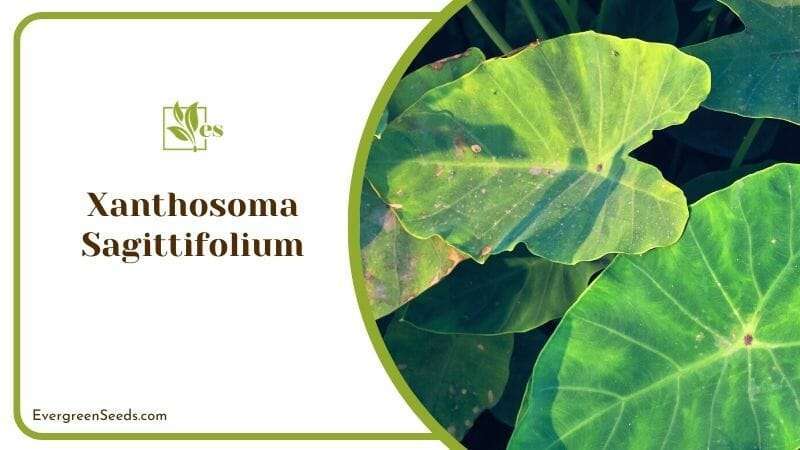
The Elephant Ear produces a large amount of foliage in the first six to nine months, producing more corms within ten months.
This plant grows from corms, tubers, or root suckers. It thrives under full sun and deeply shaded areas in natural forests or under trees. It is best to grow in wet or moist soils.
9. Xeranthemum annuum (Everlasting Plant)
Xeranthemum annuum is native to Western Asia and Eastern Europe and grown as a garden flower. It is believed to symbolize immortality and eternity to people in Asia.
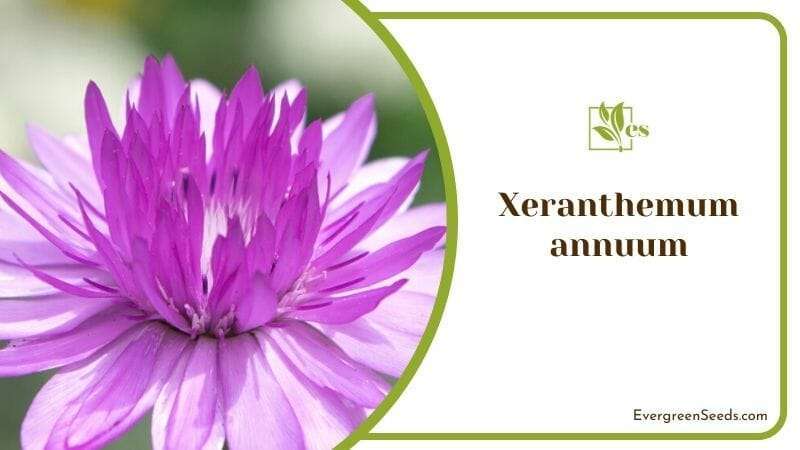
– Growth Requirements
Remember that the Evelasting Plant is an annual plant thrives in dry, sunny areas. Furthermore, it can grow on slopes, sunny lawns, vines, karst bushes, and loess farms.
It has elongated, spear-like leaves that are silvery gray. It blooms in the summer from June to September producing beautiful pink-lilac tubular flowers.
10. Xerochrysum Bracteatum
This is another plant that starts with an X, but it is known as the everlasting daisy, and it grows as an annual or perennial and belongs to the Asteraceae family.
– Features
This plant has green or gray foliage, and it blooms late spring to frost, producing white or yellow flowers surrounded by glossy tracts of various colors. It has petals that resemble stiff paper that unfold to form rings in bright, beautiful colors.
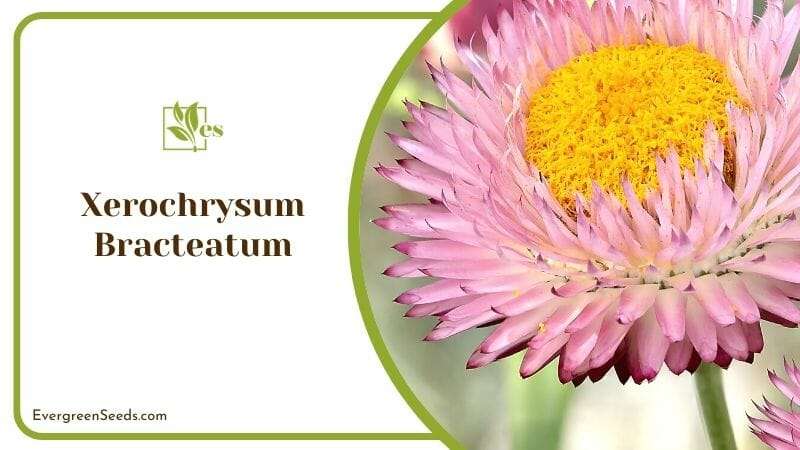
The flowers of the xerochrysum bracteatum keep their color and shape when dried, and you can find them being sold in the dry flower market. In addition, the plant serves as food for butterflies, native bees, small beetles, and grasshoppers that feast on the flowers.
– Growth Requirements
This plant best grows in average to dry soils. It moderately tolerates drought, though it still needs water to thrive. Annual pruning is advised to encourage branching and more prominent blooms.
11. Xeronema Callistemon
Xeronema Callistemon is also called or known as the Poor Knight’s Lily.
– Features
This plant is a herbaceous perennial with an unusual bottle brush flower cluster growing horizontally. It holds the look of a giant red toothbrush. It stalks out vertically, taking a curious turn sideways.
The stunning red flowers attract birds and butterflies. The leaves are green and yellow, reaching up to three inches long and two inches wide.
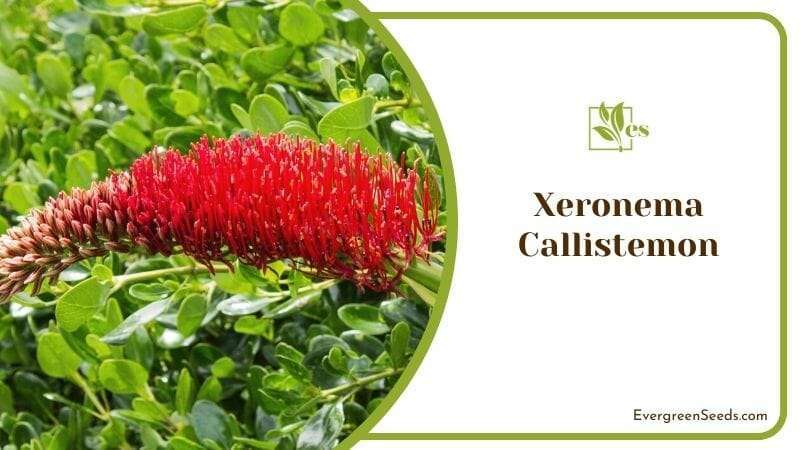
– Care Guide
This plant is a slow-growing one that may take up to 15 years to reach a flowering stage when grown from seed. It prefers loose, moist, rich, and well-draining soils in full sun or partial shade.
It is a heavy feeder, which means it will require a good amount of fertilizing during its growing season. Furthermore, it thrives in zones ten and above and is tolerant to light frost. You can propagate this plant through division or seed.
12. Xerophyllum Tenax
Bear Grass loves to grow in the mountainous areas of Washington, reaching up to about 63 inches. It has tiny white saucer-shaped flowers with long stalks, six sepals, and stamens.
– Attributes
The leaves are evergreen and grass-like, with a wiry base growing in large clumps. They have finely toothed margins, growing up to 24 inches in length. Bears love to eat their leaves in the spring; thus, the name.

– Growing Needs
Beargrass grows from ripe seeds collected in the summer or fall. You may want to plant these seeds in the spring after the soil warms up. Keep in mind that it thrives in rich, well-drained soils under full sun. Remember, you can leave it outside through the winter for cold stratification.
13. Xchirtalpa Tashkentensis
XChipalta is a hybrid flowering tree native to Oregon.
– Featured Attributes
It is a small broadleaf tree growing up to 35 feet tall. It has dense branches that grow tall and spread widely. The leaves are dull green with shaggy, soft hair. Its flowers are trumpet-shaped, resembling catalpa, with pink and yellow centers.

– Care Guide
Xchipalta grows in USDA hardiness zones six to eleven. It is tolerant to lower desert heat but can be prone to trunk scalding if subjected to too high heat.
Nonetheless, it thrives in alkaline soils with frequent watering, especially in the hot season. To encourage more canopy density, it’s best to prune this tree and reduce the rangy branching habit. It’s possible to propagate this plant through cuttings.
14. Xylosma Congestum
This evergreen shrub is native to China, Korea, and Japan, where it grows commonly in forest margins and thickets. It can grow to about 50 inches tall, but when cultivated, it reaches 12 inches tall and wide.
– Decorative Features
It can be trained to form a low-spreading canopy with an umbrella shape, making it ideal for screens and hedges.

Furthermore, it has leathery light green leaves in an oval shape, and small cream leather flowers bloom seasonally. At the end of the flowering season, it produces dark red to black berries at the end of the branches.
– Growing conditions
Dense Longwood grows in zones 8 to 11, growing to 12 feet. It thrives in evenly moist, well-draining soils in full sun and partial shade. It is tolerant to heat and drought once established.
References
- Xanthium strumarium. N.C. Cooperative Extension.
Retrieved from https://plants.ces.ncsu.edu/plants/xanthium-strumarium/ - Xanthoceras sorbifolium. N.C. Cooperative Extension.
Retrieved from https://plants.ces.ncsu.edu/plants/xanthoceras-sorbifolium/ - Xanthorhiza simplicissima. N.C. Cooperative Extension.
Retrieved from https://plants.ces.ncsu.edu/plants/xanthorhiza-simplicissima/ - Xanthorhiza simplicissima. Missouri Botanical Garden.
Retrieved from https://www.missouribotanicalgarden.org/PlantFinder/PlantFinderDetails.aspx?taxonid=286172&isprofile=0&chr=48#:~:text=Xanthorhiza%20simplicissima%2C%20commonly%20called%20yellowroot,eastern%20and%20southeastern%20United%20States. - Julissa Rojas-Sandoval, Pedro Acevedo-Rodríguez. (11 February 2014). Xanthosoma sagittifolium (elephant ear). Cabi Digital Library.
Retrieved from https://www.cabi.org/isc/datasheet/56989 - https://plants.ifas.ufl.edu/plant-directory/xanthosoma-sagittifolium/
- Xerochrysum bracteatum. N.C. Cooperative Extension.
Retrieved from https://plants.ces.ncsu.edu/plants/xerochrysum-bracteatum/ - Xeronema callistemon. Missouri Botanical Garden.
Retrieved from https://www.missouribotanicalgarden.org/PlantFinder/PlantFinderDetails.aspx?taxonid=443953&isprofile=0& - Xerophyllum tenax. LADY BIRD JOHNSON WILDFLOWER CENTER.
Retrieved from https://www.wildflower.org/plants/result.php?id_plant=XETE - Gerald B. Stanley, Jessica Rouske , Van M. Bobbitt. Xerophyllum tenax. Washington Native Plant Society.
Retrieved from https://www.wnps.org/native-plant-directory/75-xerophyllum-tenax - Xerophyllum tenax (Bear Grass). Gardenia.
Retrieved from https://www.gardenia.net/plant/xerophyllum-tenax - C Tashkentensis (Chitalpa). Gardenia.
Retrieved from https://www.gardenia.net/plant/chitalpa-tashkentensis - X Chitalpa tashkentensis. Missouri Botanical Garden.
Retrieved from https://www.missouribotanicalgarden.org/PlantFinder/PlantFinderDetails.aspx?kempercode=e826 - X Chitalpa tashkentensis. Virtual Library of Phoenix Landscape Plants.
Retrieved from https://www.public.asu.edu/~camartin/plants/Plant%20html%20files/chitalpa.html


